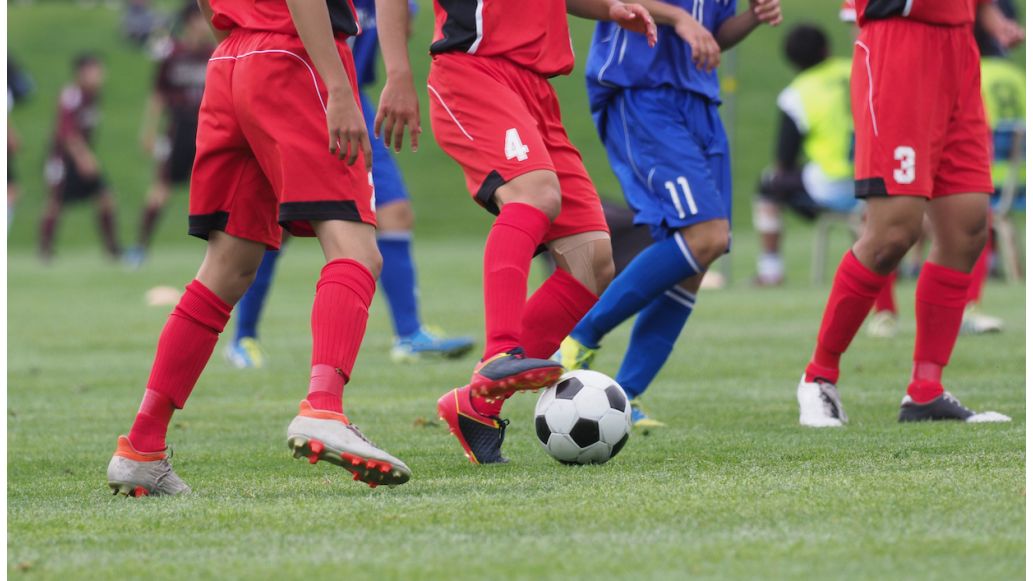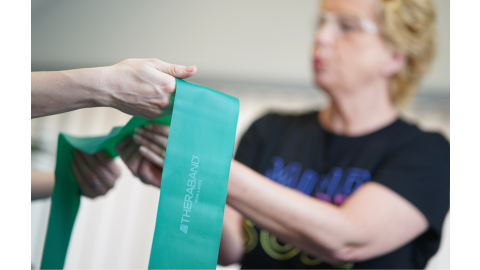Do you know how common ankle sprains are in youth soccer? Researchers estimate they make up 16-29% of all soccer injuries, making it one of the most common injuries in soccer. Learn about your sprain, how to treat it, and what to do after it heals.
What Is An Ankle Sprain?
You can sprain your ankle with just one slip and twist. When an ankle is sprained, the ankle bone itself is uninjured. It’s the ligaments surrounding the ankle bone that suffer when overstretched. It can even cause a partial or complete tear if the injury is severe enough.
Different Types Of Sprains?
Ankle sprains have different names depending on the location of the injured or torn ligaments.
- Lateral ankle sprain: The outside ankle ligaments are tender to the touch. You’ll see significant swelling within 2 hours of the injury.
- Medial ankle sprain: Tender to the touch over the inside ankle ligaments. Pain/swelling over the inside of your ankle with bruising.
- Syndesmotic sprain: Pain and swelling over front/back ligaments and lower leg space. Recovery time is longer compared to other sprains.
Degrees Of Ankle Sprains
Ankle sprains are also classified in degrees depending on the severity of the injury.
- Grade 1: When your ankle’s ligaments have stretched too far, but have not torn. This can cause mild pain, swelling, joint stiffness, and instability. Athletes typically recover in 2-10 days.
- Grade 2: This is the most common grade of sprain and results in a partial tear of the ligament. Your ankle will display lots of swelling and bruising. You’ll have moderate pain and difficulty walking. Typical recovery time is 10-30 days.
- Grade 3: This grade is the most severe; the ligament has been completely torn. Severe swelling and pain occur along with extreme loss of motion and instability of the joint. Recovery can be anywhere from 30-90 days.
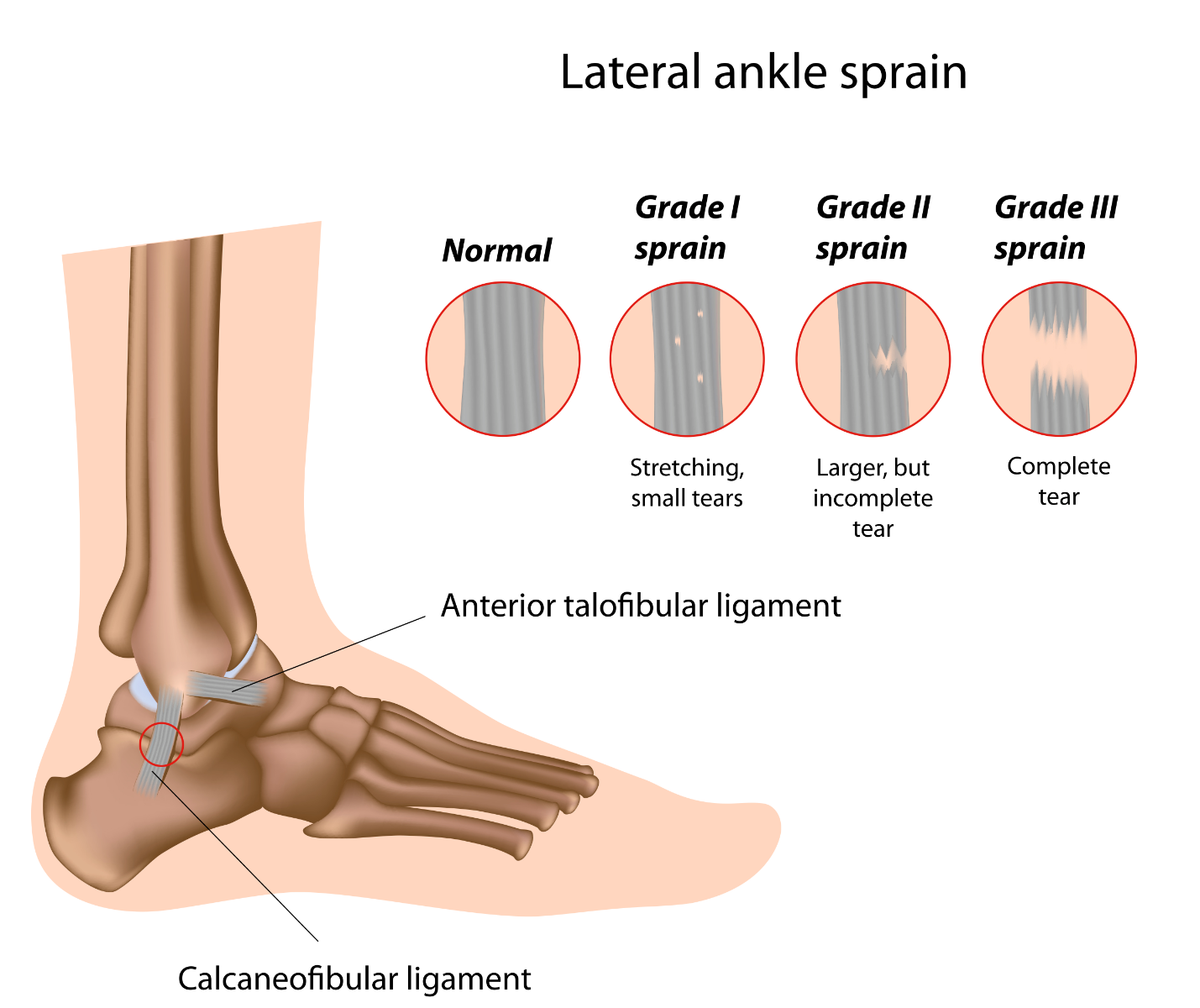
Treatment
Talk to your doctor to determine the proper treatment. For a first degree sprain, a medical professional might recommend RICE. The R.I.C.E Treatment Protocol is one of the most common methods to heal a sprain. This acronym stands for Rest, Ice, Compression, and Elevation. These are the four steps you should perform to recover properly.
- Rest: For the first couple days, rest is very important. You should refrain from performing activities that put stress on your ankle. Lay down, reduce training, and stay off your foot as much as possible while healing.
- Ice: Icing your ankle is helpful to reduce inflammation and pain. Ice your ankle 10-15 minutes every couple hours to aid in the healing process. Use the TheraPearl Hot and Cold Therapy wrap for cooling relief.
- Compression: Decrease the inflammation by applying a compression bandage, wrap, or brace. The Active Ankle Model 329 Heel-Lock Ankle Support is an easy-to-use sleeve that comfortably fits in your shoes so you can wear it on and off the field during recovery.
- Elevation: Laying down and elevating your leg will enable the blood to flow back to the heart promoting healing and decreasing the blood flow in your ankle. Use the comfortable Rolyan Leg Elevating Splint at home to enhance your healing process.
TheraBand Ankle Strengthening Exercises
|
TheraBand Ankle Plantarflexion 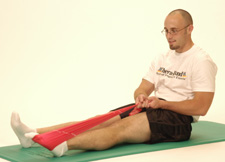
|
TheraBand Ankle Dorsiflexion 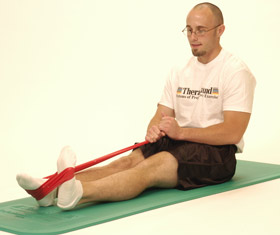
|
|
TheraBand Ankle Eversion 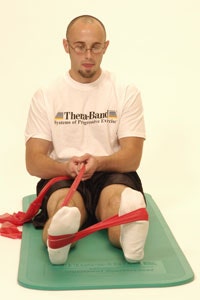
|
TheraBand Ankle Inversion 
|
Tips to Prevent Sprains
- Replace athletic shoes when treads or heels wear out
- Warm up prior to any sports activity
- Improve your balance
- Strengthen your leg, foot, hip, and core muscles
- Stretch your ankles before exercising
References
Bulat, Andrea. (2017). Ankle Sprains (Soccer). Retrieved from https://bit.ly/2OctyIX
Sparks, Neil. (Sept. 2010). Ankle Sprains. Retrieved from https://bit.ly/2mB9Iuv
Quinn, Elizabeth. (June 2018). Speedy Recovery for a Sprained Ankle. Retrieved from https://bit.ly/2mF1WQo
UCSF Medical Center. (2018). Tips for Preventing Foot and Ankle Injuries. Retrieved from https://bit.ly/1UyhCB6
Medical Disclaimer: The information provided on this site, including text, graphics, images and other material, are for informational purposes only and are not intended to substitute for professional medical advice, diagnosis or treatment. Always seek the advice of your physician or other healthcare professional with any questions or concerns you may have regarding your condition.








 France
France Australia
Australia